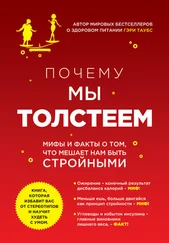Alleg, H. (2006). The question (J. Calder, Trans.). Lincoln, NE: U of Nebraska Press (Original work published 1958).
Amiez, C., Joseph, J. P., & Procyk, E. (2005). Primate anterior cingulate cortex and adaptation of behavior. In Dehaene, S., Duhamel, J., Hauser, M., and Rizzolatti, G. (Eds.), From monkey brain to human brain: A Fyssen Foundation symposium (pp. 315–336). Cambridge, MA: The MIT Press.
Andreasen, N. (2005). The Creating Brain: The Neuroscience of Genius , pp. 62–63. New York/Washington, DC: Dana Press.
Bachelard, Gaston (1968). The psychoanalysis of fire . Boston: Beacon Press. См.: Башляр Г. Психоанализ огня. – М.: Гнозис, 1993.
Bacon, Francis (1605). Advancement of learning. In Hutchins, R. M. (Ed.). (1952). Great books of the western world: Francis Bacon (Vol. 30, pp. 1–101). Chicago, Ill.: W. Benton/Encyclopedia Britannica.
Bacon, Francis (1620). Novum Organum . In Hutchins, R. M. (Ed.). (1952). Great books of the western world: Francis Bacon (Vol. 30, pp. 107–195). Chicago, Ill.: W. Benton/Encyclopedia Britannica. См.: Бэкон Ф. Новый Органон. – М.: Рипол-Классик, 2018.
Bacon, Francis (1627). New Atlantis . In Hutchins, R. M. (Ed.). (1952). Great books of the western world: Francis Bacon (Vol. 30, pp. 199–214). Chicago, Ill.: W. Benton/Encyclopedia Britannica.
Ball, P. (2010). Making stuff: from Bacon to Bakelite . In Bryson, B. (Ed.), Seeing further: The story of science, discovery, and the genius of the Royal Society (pp. 295–319). New York, NY: William Morrow/HarperCollins.
Barlow, D. H. (2002). Anxiety and its disorders: The nature and treatment of anxiety and panic (2nd ed.). New York, NY: Guilford Press.
Becker, S. W., & Eagly, A. H. (2004, April). The heroism of women and men. American Psychologist , 59 (3), 163–178.
Bennett, D. (2015, October 29). The science of fear: understanding what makes us afraid. Science Focus .
Biben, M. (1998). Squirrel monkey playfighting: making the case for a cognitive training function for play. In Beckoff, M. and Byers, J. (Eds.), Animal play: evolutionary, comparative, and ecological perspectives (pp. 161–182). Cambridge, UK: Cambridge University Press.
Binsted, G., Brownell, K., Vorontsova, Z., Heath, M., & Saucier, D. (July 31, 2007). Visuomotor system uses target features unavailable to conscious awareness. Proceedings of the National Academy of Sciences , 104 (31), 12669–12672.
Bivins, J. C. (2008). Religion of Fear: The politics of horror in conservative evangelicalism . Oxford University Press.
Blanchard, D. C., Griebel, G., Pobbe, R., & Blanchard, R. J. (2011). Risk assessment as an evolved threat detection and analysis process. Neuroscience & Biobehavioral Reviews , 35 (4), 991–998.
Bourke, J. (2005). Fear: A cultural history . London: Virago Press.
Bovin, M. J., Ratchford, E., & Marx, B. P. (2014). Peritraumatic dissociation and tonic immobility: clinical findings. In Lanius, U. F., Paulsen, S. L., & Corrigan, F. M. (Eds.), Neurobiology and treatment of traumatic dissociation: Towards an embodied self (pp. 51–67). New York, NY: Springer Publishing Company.
Boyer, P., & Bergstrom, B. (2010). Threat-detection in child development: An evolutionary perspective. Neuroscience & Biobehavioral Reviews , 35 (4), 1034–1041.
Brannon, E. M. (2005). Quantitative thinking: From monkey to human and human infant to human adult. In Dehaene, S., Duhamel, J., Hauser, M., and Rizzolatti, G. (Eds.), From monkey brain to human brain: A Fyssen Foundation symposium (pp. 97–116). Cambridge, MA: The MIT Press.
Brewin, C. R., Gregory, J. D., Lipton, M., & Burgess, N. (2010). Intrusive images in psychological disorders: characteristics, neural mechanisms, and treatment implications. Psychological Review , 117 (1), 210–232.
Brooke, J. (1988). The God of Isaac Newton. In Fauvel, J., Flood, R., Shortland, M. & Wilson, R. (Eds.), Let Newton be! (pp. 169–183). Oxford, England: Oxford University Press.
Brooks, D. (2014, March 24). The republic of fear. The New York Times , p. A27.
Brooks, D. (2015, April 3). On conquering fear. The New York Times , p. A23.
Brown, S. (1998). Play as an organizing principle: clinical evidence and personal observations. In Beckoff, M. and Byers, J. (Eds.), Animal play: Evolutionary, comparative, and ecological perspectives (pp. 243–259). Cambridge, UK: Cambridge University Press.
Burghardt, G. M. (1998). The evolutionary origins of play revisited: lessons from turtles. In Beckoff, M. and Byers, J. (Eds.), Animal play: Evolutionary, comparative, and ecological perspectives (pp. 1–26). Cambridge, UK: Cambridge University Press.
Butterfield, H. (1957). The origins of modern science 1300–1800 (2nd ed.). London: G. Bell and Sons Ltd.
Bynum, C. (2001). Metamorphosis and identity . New York, NY: Zone Books.
Bynum, C. W. (2011). Christian materiality: an essay on religion in late medieval Europe . New York, NY: Zone Books.
Cantor, G. (1988). Anti-Newton. In Fauvel, J., Flood, R., Shortland, M. & Wilson, R. (Eds.), Let Newton be! (pp. 203–221). Oxford, England: Oxford University Press.
Chambers Jr, H. L. (2004). Fear, irrationality, and risk perception. Mo. L. Rev., 69, 1047–1052.
Changeux, J. P. (2005). Genes, brains, and culture: From monkey to human. In Dehaene, S., Duhamel, J., Hauser, M., and Rizzolatti, G. (Eds.), From monkey brain to human brain: A Fyssen Foundation symposium (pp. 73–94). Cambridge, MA: The MIT Press.
Chittick, W. C. (1989). The Sufi path of knowledge: Ibn al-'Arabi's metaphysics of imagination . Albany, New York: State University of New York Press.
Cook, S., Peterson, L., & DiLillo, D. (2000). Fear and exhilaration in response to risk: An extension of a model of injury risk in a real-world context. Behavior Therapy , 30 (1), 5–15.
Corrigan, F. M. (2014). The clinical sequelae of dysfunctional defense responses: Dissociative amnesia, pain and somatization, emotional motor memory, and interoceptive loops. In Lanius, U. F., Paulsen, S. L., & Corrigan, F. M. (Eds.), Neurobiology and treatment of traumatic dissociation: Towards an embodied self (Kindle edition. pp. 153–172). New York, NY: Springer Publishing Company.
Corrigan, F. M. (2014). Defense responses: Frozen, suppressed, truncated, obstructed, and malfunctioning. In Lanius, U. F., Paulsen, S. L., & Corrigan, F. M. (Eds.), Neurobiology and treatment of traumatic dissociation: Towards an embodied self (Kindle edition. pp. 131–152). New York, NY: Springer Publishing Company.
Corrigan, F. M. (2014). The neurobiology of active and passive defense responses. In Lanius, U. F., Paulsen, S. L., & Corrigan, F. M. (Eds.), Neurobiology and treatment of traumatic dissociation: Towards an embodied self (Kindle edition. pp. 29–50). New York, NY: Springer Publishing Company.
Crouch, T. A., Lewis, J. A., Erickson, T. M., & Newman, M. G. (2017). Prospective investigation of the contrast avoidance model of generalized anxiety and worry. Behavior therapy , 48 (4), 544–556.
Damasio, A. R. (2003). Looking for Spinoza: Joy, sorrow, and the feeling brain . Houghton Mifflin Harcourt.
Danforth, L. M. (1989). Firewalking and religious healing: the Anastenaria of Greece and the American firewalking movement . Princeton, NJ: Princeton University Press.
Deacon, T. (2006). The Aesthetic Faculty. In Turner, M. (Ed.) The artful mind: Cognitive science and the riddle of human creativity (pp. 21–56). New York, NY: Oxford University Press.
Читать дальше
Конец ознакомительного отрывка
Купить книгу












